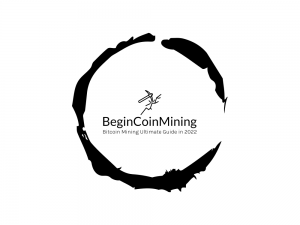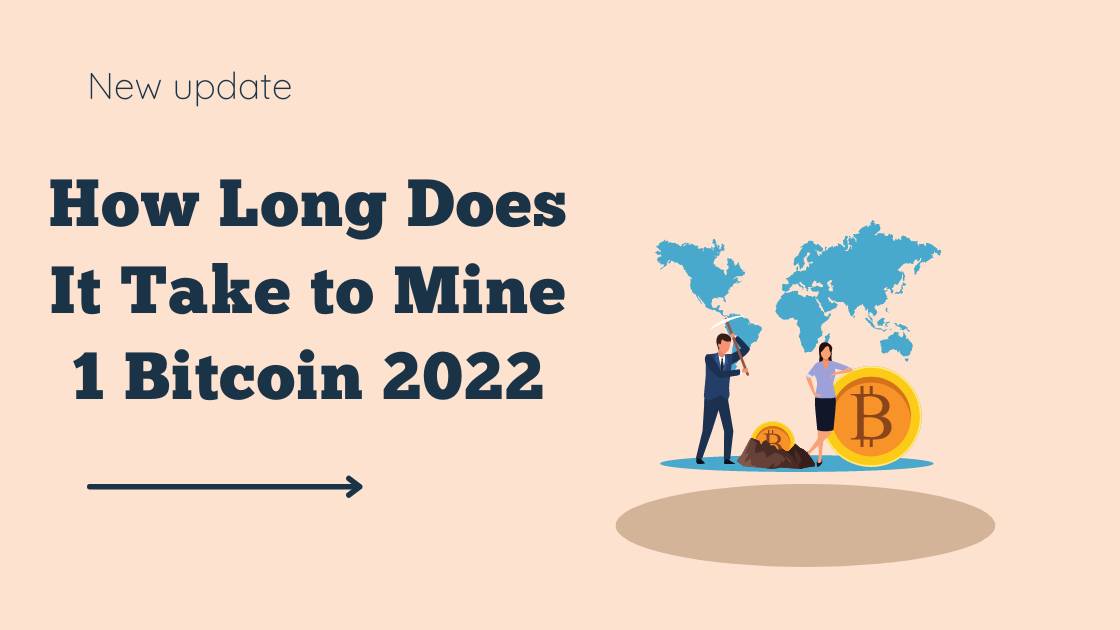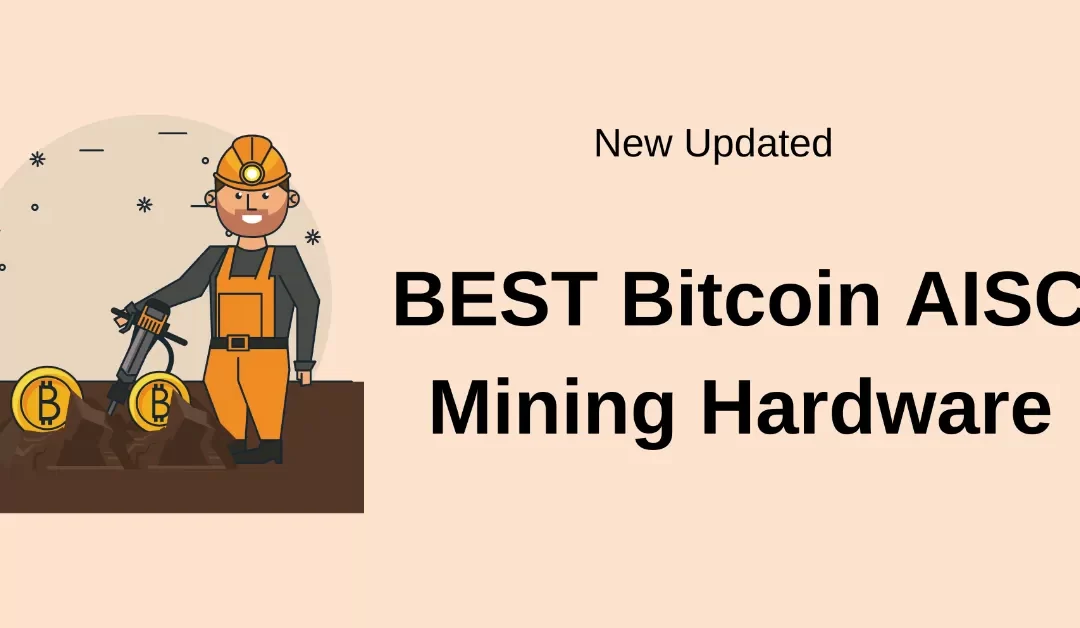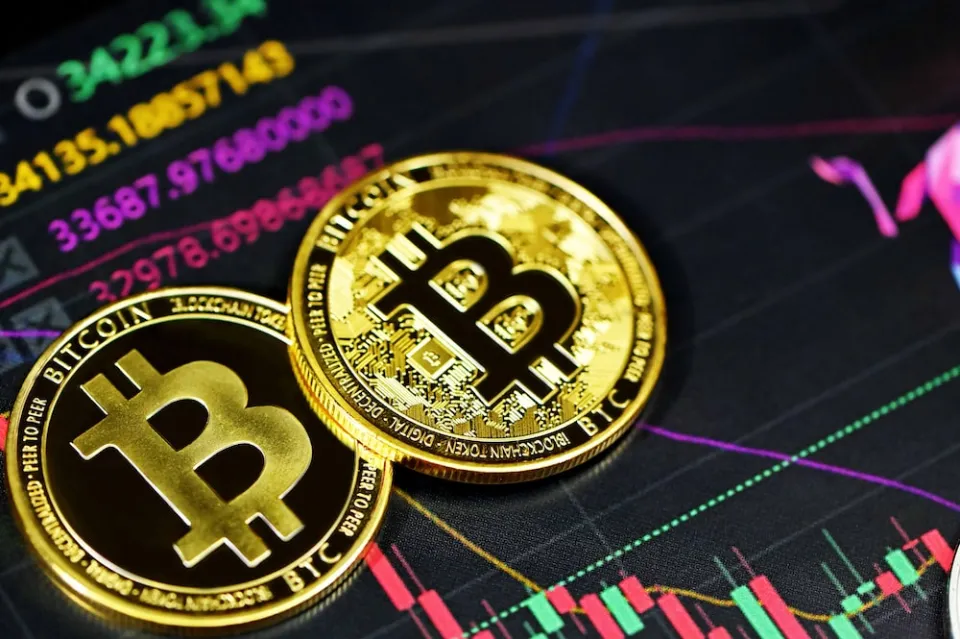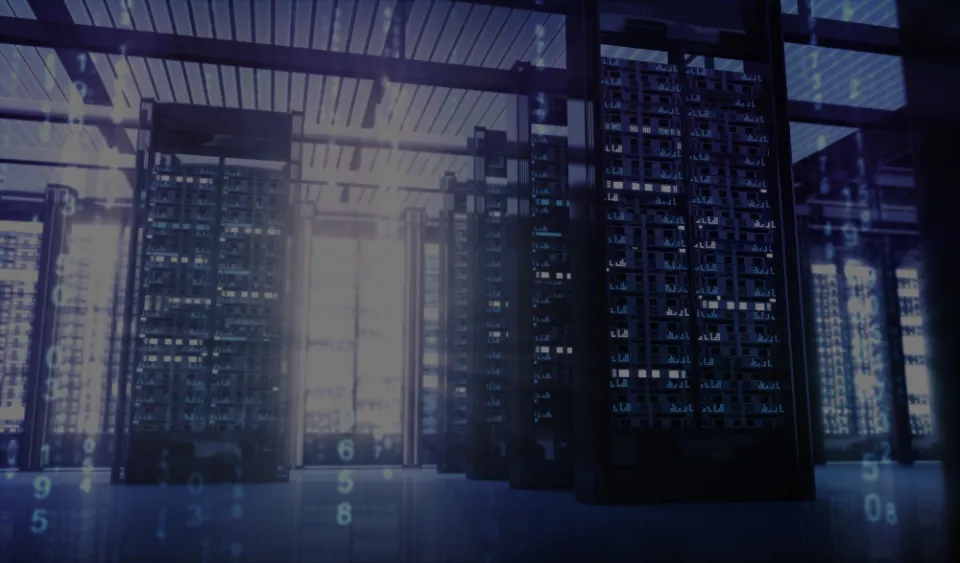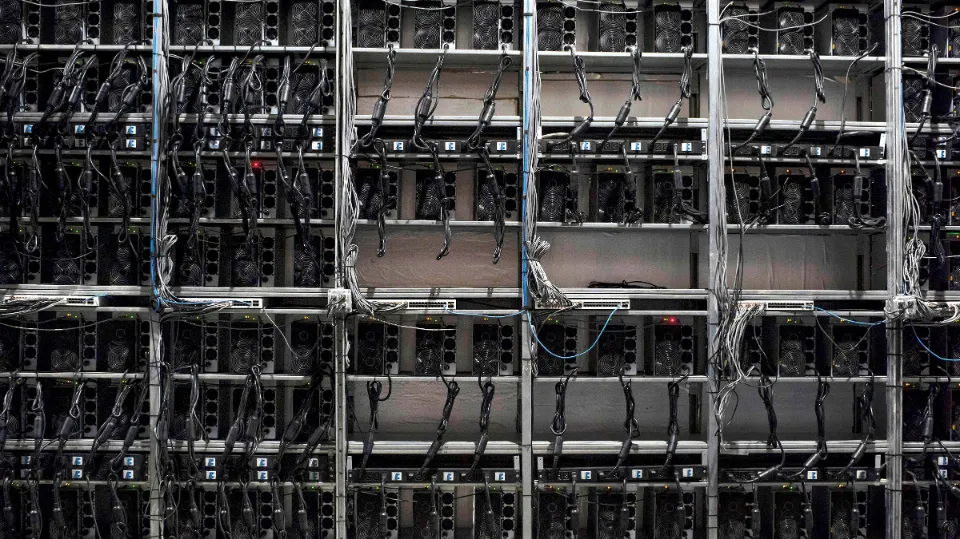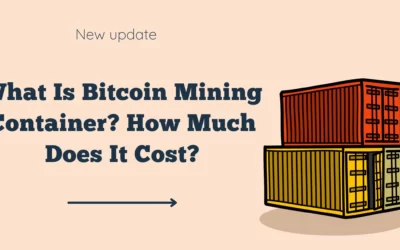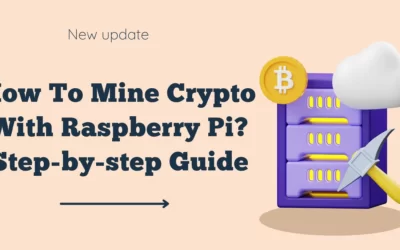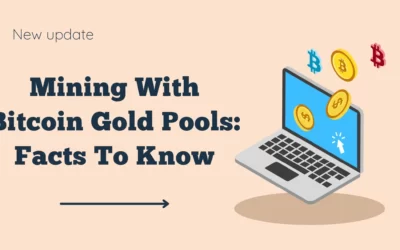This guide discusses the bitcoin mining process to mine 1 bitcoin using different mining equipment, and factors affecting how long it will take to mine at least one BTC.
Those who cannot afford to purchase Bitcoin may still be curious about how long it takes to mine one bitcoin as the price of the cryptocurrency swings back and forth between bullish and bearish candlestick patterns. If you fall into this category, there is good news for you because this article will attempt to address your question.
First and foremost, we need to remember that mining BTC is no longer as easy as it was ten years ago, when anyone with a PC could do it. A number of factors, however, make mining Bitcoin today all but impossible. Let’s begin by examining the mining process to gain a clear understanding of why things have changed.
What is the Process of Mining 1 Bitcoin?
Nowadays, unlike in the past, mining Bitcoin is best understood in terms of mining cryptocurrency blocks rather than discrete units like one Bitcoin (BTC). The explanation is straightforward: new Bitcoins are only created when a new block on the Bitcoin blockchain is approved.
In order to mine blocks, it is necessary to solve a hash, a type of complicated mathematical equation. The reward for being the first miner to validate a new block is currently 6.25 BTC, down from 12.5 BTC.
However, it is not as simple as it seems. It is very challenging to maintain an advantage when thousands of miners are vying for the right to mine the block in front of you. As there are more miners in the network, mining becomes more challenging. As a result, each block requires more processing power to solve.
Mining Bitcoin becomes more challenging as more miners try to enter the market. The hash rate will rise as a result of this.
Due to this difficulty, miners typically join mining pools to ease the difficulty. Typically, mining pools pool the computing power of a number of users. Profits will also be divided among the members.
Read More: Best Bitcoin Mining Pools
KEY HIGHLIGHTS
- Every ten minutes, a new block is added to the blockchain, creating a new bitcoin.
- This new bitcoin serves as the reward for the work of the miners.
- With the right tools, energy sources, and time, one complete bitcoin can be mined.
- Mining is an unpredictable and haphazard process. To reduce the risk in their income, miners join mining pools.
Factors That Affect Mining One Bitcoin
Because it depends on a number of variables, estimating how long it takes to mine 1 bitcoin is difficult. Notably, the use of hardware, competition, and computational power are important determinants. However, the hashing difficulty algorithm consistently affects how long it takes to mine 1 BTC. It is built in such a way that it will automatically adjust to produce a block verification time of 10 minutes.
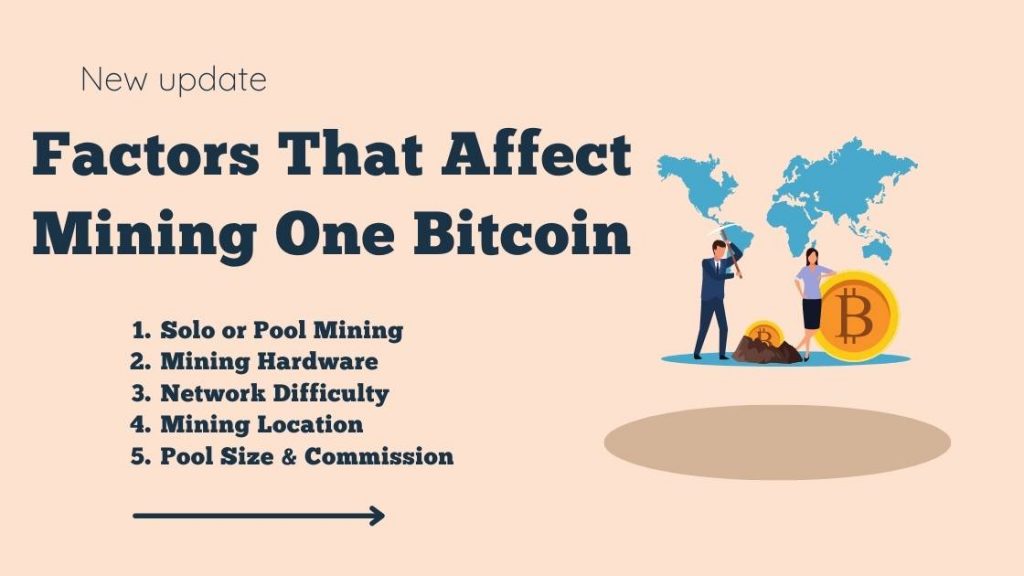
Therefore, mining BTC takes about 10 minutes in an ideal scenario. But most mining environments and circumstances are far from ideal. For instance, while it was once possible to mine Bitcoin on your own using a personal computer, things have changed in light of recent technological advancements.
Nowadays, mining requires a lot of electricity and equipment that is well beyond the capabilities of most people. Your mining speed is ultimately affected by this. Therefore, if you are mining alone, your mining time will probably exceed the recommended 10 minutes.
Here are the factors:
- Solo or pool mining – you will need to consider whether you wish to become a solo miner or a pool member. This is a crucial element in determining whether or not you will succeed. The chances against a solo miner are so great that they hardly ever produce any coins. Furthermore, since BTC mining is similar to winning the lottery, your chances of mining the upcoming block increase as your computing power does. Solo miners often suffer from undercapitalization which means that they end up with less hashing power than needed to compete successfully;
- Hardware – your choice of hardware plays another important role in determining your future profitability within the If you intend to use CPU, graphics cards, or FPGAs, you probably won’t ever mine a single bitcoin. There are machines that are more effective and powerful than others, even among ASIC miners. It is worth noting that ASIC manufacturers are constantly improving their products and newer ones are often better than previous releases;
- Network difficulty – is a measure of how difficult it is to solve the arbitrary To be eligible to build the following block, the Bitcoin network challenges you. As more miners join or leave the network, the difficulty is intended to automatically adjust upwards or downwards in accordance with the specifications of the Bitcoin software, respectively. To continue mining one block of BTC every 10 minutes at a constant rate, the network difficulty must be adjusted. Every prospective miner must consider this factor as it directly determines the kind of hardware to acquire to achieve a particular target hash rate;
- Mining location – where you decide to locate your mining rig is important, especially if you choose to mine within a pool, since this affects latency. As was previously mentioned, latency refers to the rate or speed at which data is sent and received between two points within a network. The lower your latency and, consequently, the more effective your mining rig is, the closer you are to the server. Ultimately, this affects the amount of work you will perform within the pool, which also affects the number of coins you receive as a reward;
- Pool size and commission – the larger the mining pool (measured in terms of hash rate contributed), the more likely it is to mine the next However, such sizable pools also impose higher pool membership fees, which are subtracted from the miners’ profits. Expectedly, the longer it takes to mine 1 Bitcoin, the lower your earnings will be due to the higher commission.
The Role of Mining Hardware and Competition
In addition to being costly and time-consuming, running a solo mining operation may also be difficult. Using a mining pool is the most effective strategy for Bitcoin mining. The best chance of being the first to mine a block of BTC within the ideal window of 10 minutes is for any mining pool to use the most recent hardware.
Additionally, brand-new mining rigs with more powerful processing capabilities can speed up Bitcoin mining considerably. As a result, they are making it difficult for solo miners to compete. ASIC, FPGA, GPU, and CPU are prominent mining rig components.
Installing and configuring CPUs is simple. Get multi-core processors or CPUs with multiple motherboards, though, if you want improved performance. When GPU, FPGA, and ASIC emerged, CPUs were relegated to mining specific altcoins. As a result, CPUs were once used for Bitcoin mining. Due to technological advancements, even the GPU and FPGA have lost their relevance in Bitcoin mining.
Right now, ASIC hardware is what Bitcoin miners use to process transactions. These chips are designed specifically to mine Bitcoin using the SHA-256 hashing algorithm. Therefore, it will be extremely challenging to compete with mining pools that use ASIC technology using any other less optimized hardware.
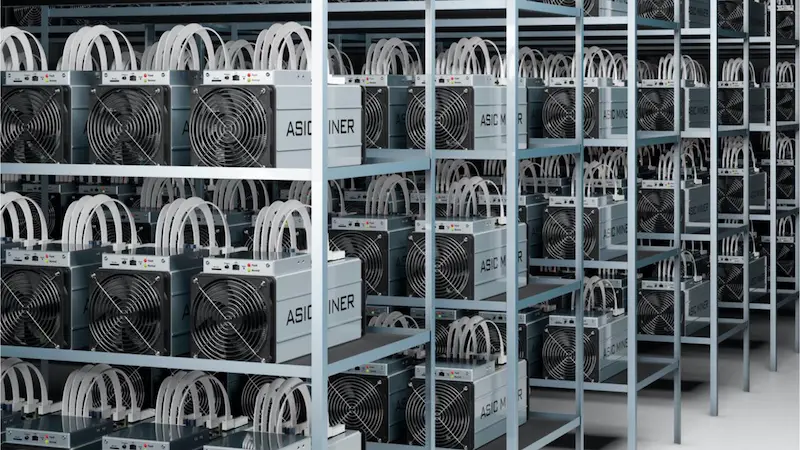
What is the Difficulty Rate at the Moment?
The difficulty rate shifts once every 2,016 blocks built. This set of blocks takes about two weeks to finish, and then either the difficulty goes up or down. The difficulty decreases if the most recent block took longer than two weeks to be found. The difficulty automatically increases if the procedure took less time than two weeks.
How to Mine Bitcoin?
After describing how Bitcoin mining operates, we’ll discuss various mining techniques. These are:
- Solo mining – as the name suggests, this type of mining involves validating and confirming transactions individually. The miner keeps all of the rewards, making it potentially more profitable than other types of mining. However, it’s more difficult to mine this way successfully;
- Pool mining – here, solo miners join forces to create a pool of common computing power that can then be used to mine Increased computing power increases the likelihood that a new block will be successfully created and rewarded with new BTC coins. Rewards are this shared amongst pool members proportionately according to computing power contributed;
- Cloud mining – there are two subcategories of The first type of BTC cloud mining entails financial resources being pooled by investors and funding a technical team to build and manage a mining operation. The alternative to cloud mining entails a lone person renting out computing power on distant servers and using those machines to mine Bitcoin.
Recommended: Best Free Bitcoin (BTC) Mining Websites
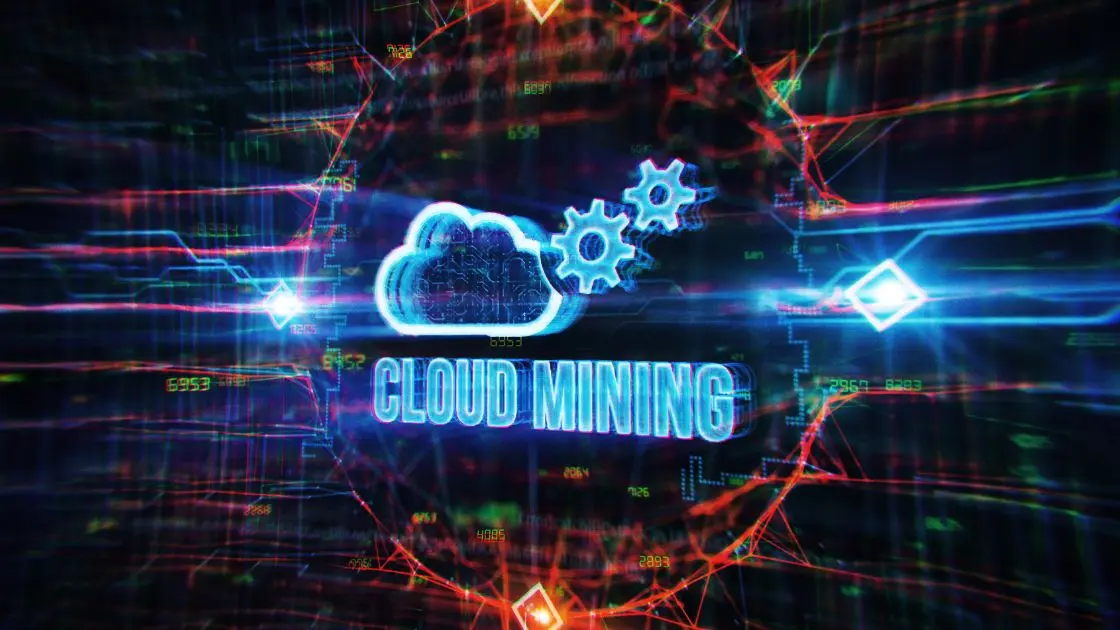
Bitcoin Mining Profitability
It is extremely difficult to determine the profitability of Bitcoin mining because one miner’s gains may be another’s losses. To calculate this figure, you will need the following information:
- Investment cost, which includes the cost of the hardware, and maintenance costs;
- Energy costs are determined by the location of the mining rig;
- Pool mining fees or commission (for those mining within a pool);
- Bitcoin’s cost or its value in relation to the US dollar.
Expectedly, different miners will have varying profits even if they end up mining the same amount of Bitcoins. For that reason, it is advised to estimate your miner’s profitability using one of the several freely available profitability calculators online, such as this one from Minerstat.
Read More: Is Bitcoin Mining Profitable? Is it Still Worth It?
How Long Does It Take to Mine 1 Bitcoin Using a PC?
Although this is only true for powerful machines, the typical time to generate one Bitcoin is around ten minutes. Your chosen Bitcoin mining equipment will determine how quickly you can mine. With today’s computing requirements, mining Bitcoin on your home computer could take years because the network is already being used by many strong ASICs, which makes it impossible to mine a single block in a reasonable amount of time.
Additionally, nearly yearly, new mining rigs with improved performance and computing capabilities are developed and released. As a result, using a conventional PC to mine will produce very little now that ASICs and advanced mining rigs are available, regardless of whether you use Windows or MacOS. There is simply no way to compete with ASIC capacity.
There is hope, though. You can also choose to join a Bitcoin mining pool. You still rely on the computational power of the other pool members even though the generation time of a Bitcoin might be faster than mining alone. Therefore, it’s rather difficult to precisely answer: “One bitcoin’s mining process takes how long?” How quickly the pool will validate transactions on the blockchain will depend on the pool you select.
Is the best alternative therefore to join a mining pool? Yes, the fact that the first miner to correctly solve the computational problems receives the block reward is what makes mining so competitive. You need a significant amount of computing power to solve the hash, which is something you cannot achieve by using only personal computers. Even so, you can still amass small amounts of Bitcoin if you join a mining pool with other miners, pool their computing resources, and split the block rewards.
How Long Does It Take to Mine 1 Bitcoin Using a Smartphone?
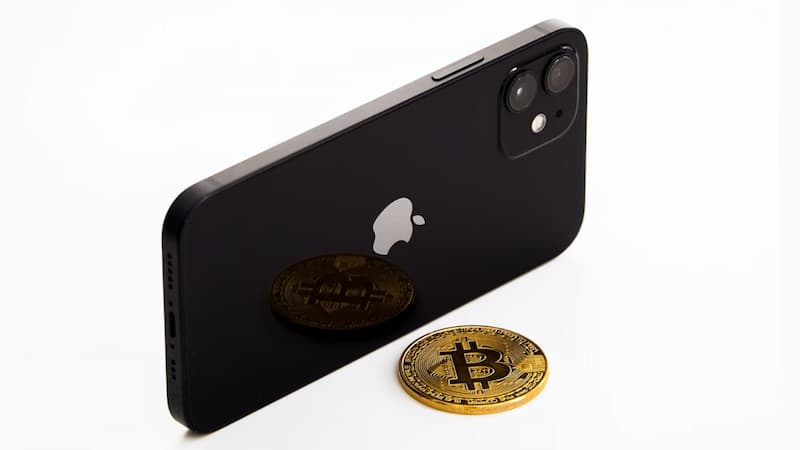
You will find the process to be very challenging, even if you have chosen to mine Bitcoin by yourself on your smartphone. In addition to the coin’s high computing power requirements, Apple and Google have put restrictions on on-device mining on iOS and Android. In fact, the most recent Developer Program Policy released by Google is very explicit regarding cryptocurrency mining. It read: “Applications that mine cryptocurrencies on devices are not permitted by us. Apps that oversee cryptocurrency mining remotely are allowed.”
It is obvious from the policy that Google only approves applications that allow for remote monitoring of the mining process. Therefore, why did Google remove the crypto mining apps? Alternatively, why did Apple remove the crypto mining apps from their app store?
While Google doesn’t explicitly explain the reasons behind the ban, Apple is very clear that “The battery should not be rapidly depleted by apps, nor should they produce excessive heat or demand too much of the device’s resources.” It follows that this is the same justification for why Google removed these apps from their app store.
Of course, you will find some of them if you search for mining apps on the Play Store. Notably, you will discover MinerGate Control, which merely allows you to remotely manage the mining process rather than actually mining cryptocurrency.
You can download mining apps from the web if you want to be resourceful. It’s possible to do this, but you run the risk of infecting your smartphone with malware, which could have very negative effects. Now you have the answer at: “One bitcoin can be mined in how long?”
Read More: How to Mine Bitcoin on iPhone: Best Bitcoin Mining Apps for iPhone
Cloud Mining on Your Smartphone
Although MinerGate initially supported cloud mining through its data center, the team recently stopped supporting the BTC mining pool. MinerGate’s website reads: “The team at MinerGate has decided to stop supporting the BTC mining pool due to the persistent trend of declining profitability in Bitcoin mining.”
9 Interesting Facts & Stats on BTC Mining
What is the current price of bitcoin, how much does it cost to mine 1 bitcoin, and how many BTCs can you mine each day?
1. The Production Cost of Mining One BTC Has Dropped from $24,000 to $13,000.
(The Coin Republic)
One bitcoin is currently mined for $13,000, 46% less than it was in early June when it cost $24,000. The cost of electricity is a major factor in the price of mining bitcoin.
A mining operation will be profitable regardless of whether the price of Bitcoin declines or not as long as it is above its mining cost. One bitcoin is currently worth $21,478 as of September 10, 2022, which is significantly less than its price on June 29, 2021, when one BTC was valued at $35,548.
2. Venezuela is the Most Expensive Country for BTC Mining.
(911metallurgist)
In Venezuela, mining one BTC costs a startling $246,530. Antigua and Barbuda ($89,412) is the most expensive country to mine BTC in, with Solomon Islands ($142,581) coming in second.
The least expensive nation for mining bitcoins is Sudan ($4,779), followed by Algeria ($4,181) and Kuwait ($1,393).
3. Louisiana is the Cheapest US State for BTC Mining.
(911metallurgist)
In Louisiana, it costs $14,955 to mine one bitcoin. The cost of mining Bitcoin in Hawaii, the state with the highest mining costs ($54,862 per coin), is almost $40,000 less than this.
4. New York Has the Largest Number of BTC Miners.
(CNBC) (CNBC)
The highest hash rate for bitcoin is recorded in New York (19.9%), followed by Kentucky (18.7%), Georgia (17.3%), and Texas (14%).
In light of this, New York lawmakers approved a bill banning specific bitcoin mining operations that depend on carbon-based energy sources.
6. Ideally, You Can Mine An Average of 144 BTC Blocks Every Day, Or Six Blocks Per Hour.
(Buy Bitcoin Worldwide)
Because the mining process requires blocks, it is impossible to mine one bitcoin per day. There are 6.25 bitcoins in each block.
Blocks in Bitcoin are collections of transactions from a specific time. You can mine six blocks per hour or 144 blocks per day under ideal circumstances.
7. It is Possible to Mine BTCs Using a Gaming Laptop.
(CryptoMinerTips) (Scholar)
Purchase a laptop with a 1060 6 GB or 1070 8 GB GPU if you want to use it for both mining and gaming.
As with any other mining device, your hash power determines how long it takes to mine 1 bitcoin on a laptop. In reality, you may need years to mine a single block because you are competing with ASICs that are much more powerful.
In addition, the mining process can cause laptops to overheat quickly. How can you obtain one bitcoin without breaking your laptop? If you choose to mine bitcoins on your laptop, keep an eye on the GPU’s temperature, add more cooling devices, and take breaks to avoid overheating.
8. It Takes About 188 Days to Mine One Bitcoin Using An RTX 3070 Graphic Card.
(Zcoino)
Approximately 32 MH/s can be generated by mining BTC with the RTX 3070 graphics card. Let’s calculate how long it takes to mine 1 bitcoin with an RTX 3070. Around 188 days.
However, since it will take 2.4 million years to mine a single BTC, you shouldn’t use low-power graphics cards like a GTX 1080.
9. Android Phones Can Generate a Tiny Amount of Bitcoin over the Course of Several Months.
(Planet Compliance)
While there are numerous mining apps available for download on your phone, you won’t produce even a small portion of the coin for several months.
The performance of your mobile device can also be affected by mining apps, and in some cases, the entire device can be ruined. So, using your phone to mine BTCs is not something we would advise.
In addition, cryptocurrency mining applications for their devices have been forbidden by Apple and Google.
How Long Does It Take to Mine 1 Bitcoin – Conclusion
No miner has the assurance that he will be the one to receive the block as Bitcoin mining becomes extremely competitive and less profitable, especially if he lacks the computational power necessary to outperform the other miners. Therefore, calculating the reward time for successfully mining a block is complicated, and even with all the variables, there is no simple, accurate way to respond to the question of how long does it take to mine 1 Bitcoin. When your rivals are using ASICs and mining rigs, the answer is even more difficult to understand if you are using a PC or smartphone.
FAQs on Bitcoin Mining

Is It Possible to Mine 1 Bitcoin a Day?
In a technical sense, no, since you’ll be mining blocks rather than bitcoins. However, you can get paid in bitcoins for finishing blocks.
6.25 BTC per block is the current payment for successfully completing a block. Furthermore, in ideal circumstances, you can mine six blocks an hour, or 144 BTC per day.
How Much Bitcoin Can U Mine in a Day?
Your hardware, software, and hash rate (speed of mining) will all play a role. You might be able to mine 0.0005 BTC per day, or $10.24, if your hash rate is 140 TH/s, for instance.
How Much Does It Cost to Mine 1 Bitcoin?
The price of producing one bitcoin is $13,000. The most expensive country to mine bitcoins is Venezuela, and the least expensive is Kuwait ($246,530 vs. $1,393 for one BTC).
In terms of US states, Louisiana is the least expensive state ($14,955 per coin), and Hawaii has the highest cost of mining bitcoin ($54,861 per coin).
How Long Does It Take to Mine 1 Ethereum?
7.5 days if the hashing speed is 500 MH/S.
How Long Does It Take to Mine 1 Bitcoin at Home?
The optimal time to mine one bitcoin is between ten minutes and thirty days. However, this assumes that you have an ASIC miner and a very powerful mining rig setup.
ASIC miners with a hash rate of 95–110.0 TH/s would also need to be used in groups of five to ten. When building an ASIC miner to mine, how long does it take to produce 1 bitcoin? About 100 days.
How Does Bitcoin Mining Work?
The term “mining” is just a metaphor, though. Validating transactions is what bitcoin mining actually entails. Before adding transactions to the bitcoin network, it is your responsibility as a miner to find, confirm, and validate them from a pool of unconfirmed deals. By resolving mathematical puzzles, which we will cover in the following sections, you can verify entries. The system rewards you with bitcoins in exchange.
Why Do Bitcoins Need to Be Mined?
Since bitcoin is a relatively new currency that hasn’t yet been recognized as legal tender, there isn’t a single response to this query. In fact, the very reason it needs to be mined is because of how decentralized it is. The introduction of new bitcoins into circulation required the establishment of a system of checks and balances.
What Bitcoin Mining Terms Should You Know About?
Before we discuss what goes on during bitcoin mining, make sure to take note of the following bitcoin terms first:
Hash: There are various meanings for this phrase. It can refer to the SHA-256 algorithm’s hash value or alphanumeric string output (more on that later). Additionally, a computer’s hashing capability may be referred to. Hashing translates to a computer’s “guessing” capacity.
Block header: This can be compared to metadata that contains all useful information about a bitcoin block, which include its:
Version: Version of the bitcoin mining application.
Previous block hash: the block’s prior block’s hash value.
Merkle root: a hash value for every transaction listed in the block.
Timestamp: when the block was first made.
Target: The hashing operation must successfully satisfy the target hash, which is a 256-bit number.
Nonce: a value that miners alter with each attempt at hashing to reach the goal.
What Equipment Do You Need to Mine Bitcoins?
You must employ an appropriate computer hardware setup. Most likely, the laptop or desktop you are using to read this is inadequate for the task. It is unlikely to have the necessary processing speed and performance efficiency. Not all computers can handle SHA-256 hashing, which is a powerful technique. In order to perform billions of computations while using the least amount of electricity possible, mining for bitcoins requires extremely efficient hardware.
These days, the most popular mining hardware includes Application-Specific Integrated Circuits (ASICs), Field Programmable Gate Arrays (FPGAs), and Graphics Processing Units (GPUs). Bitcoin miners’ preferred equipment is ASICs in particular.
ASICs are made to speed up hash calculations without using a lot of power. Today’s ASICs are a far cry from the entry-level models with processing speeds of 7–16 TH/s. Their current hashing rates range from 40 to 60 TH/s, and they use between 2,000 and 3,000 watts of power. The top companies in this market include Bitmain, Ebang, and Innosilicon.
FPGAs are specialized chips that can be configured to carry out particular functions like image processing and hash computations. They are less power-intensive than CPUs and can run a variety of programs and algorithms like ASICs. However, it is believed that ASICs are more effective than FPGAs.
While GPUs are frequently found in gaming laptops and computers, many miners also use them. However, doing so might yield lower profits. These are more appropriate for other cryptocurrencies, like ethereum, according to experts. They recommend GPU miners mine different cryptocurrencies and trade them for bitcoins.
Can You Mine for Bitcoins Without the Right Equipment?
Without specialized hardware, it is possible to mine bitcoins. Also known as “cloud hashing,” cloud mining is another way for miners who do not have their own mining infrastructure to extract bitcoins. The remote data center that is used for cloud mining is run by a separate mining operation. To install their mining software, users only need to rent a virtual server. To become a member of a cloud-mining farm, they can also buy a contract or split one with others.
A variety of cloud-mining packages are frequently available from mining pools. Pricing may vary depending on a number of elements, including hashing power, cross-referencing, contract length, and occasionally potential profits. Miners may be required to pay a daily fee plus an upfront cost of at least US$2,000 for such packages.
How Many Bitcoins Are Left to Mine?
Approximately 2,085,331.3 bitcoins will still need to be mined as of December 30, 2021, with 900 more being produced every day. There are currently 18,914,668.75 bitcoins in existence. Every 10 minutes, when a new block is identified, this total is updated. 12.5 additional bitcoins are created with each block that is mined.
The last bitcoin will be mined on March 26, 2024, according to experts’ predictions, assuming that neither the protocol nor the number of bitcoins issued change.
What Happens After All the Bitcoins Have Been Mined?
Since no one is certain, the answer to that is a hotly contested topic. However, experts contend that once every bitcoin has been found, none more will ever be created. The value of bitcoins may increase, according to some theories, because of this scarcity. We will see by 2024.
How Profitable is It to Mine for Bitcoins?
If you want to pursue high rewards, as with other forms of investing, there are always high risks. For those who can afford the best mining equipment or contracts, mining and trading bitcoins can be very lucrative. You may need to moderate your expectations if you are a small-scale miner and expect to bring home the bacon. That is especially crucial now that institutional investors and more miners are joining the fray.
Bitcoins are deflationary assets first and foremost. Thus, there is a finite amount available. Then there’s the phenomenon of “halving,” which slashes block rewards in half. When bitcoins were first created, this feature was predetermined. Every four years, it takes place.
